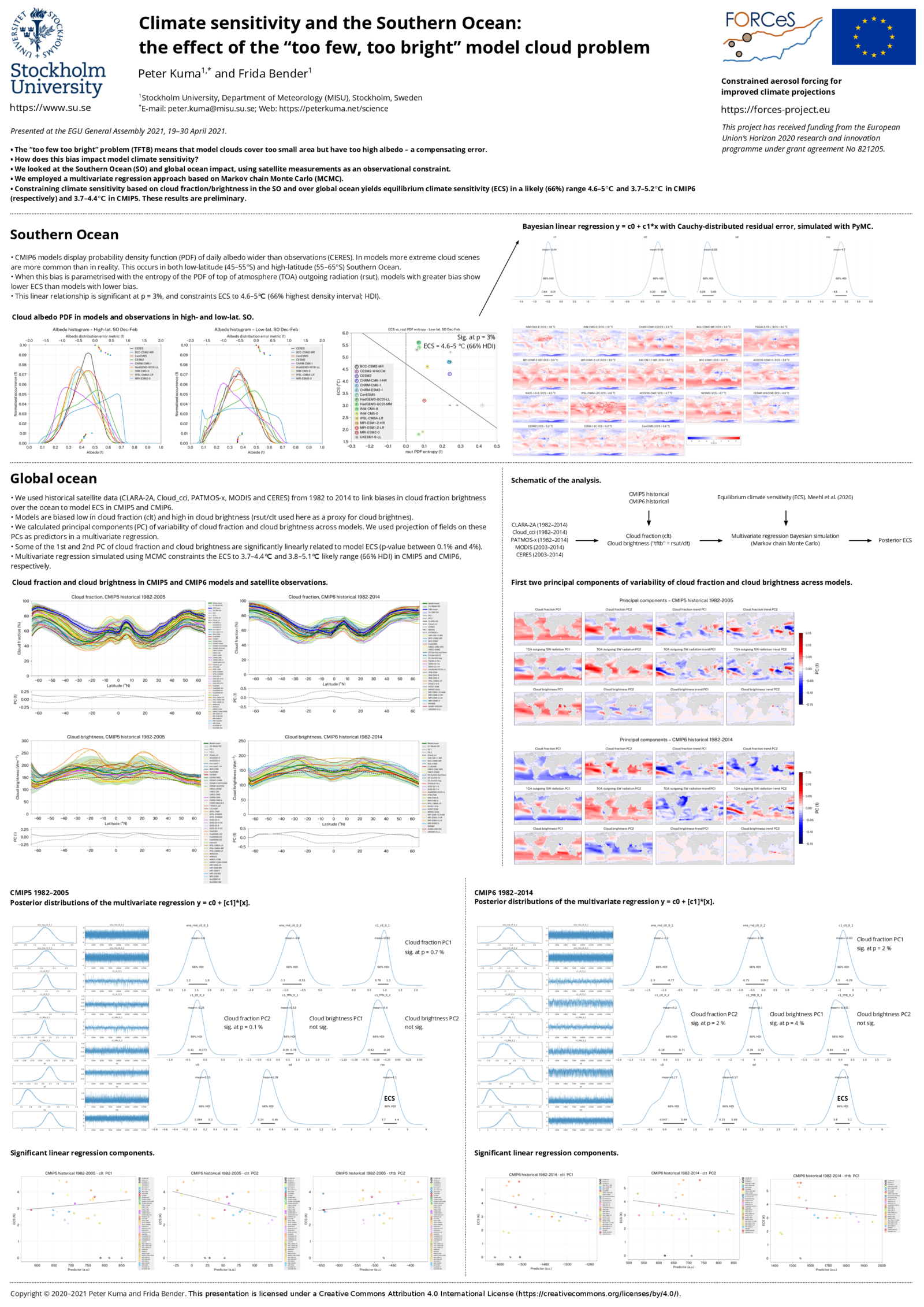Equilibrium and transient climate sensitivity (ECS and TCS) are some of the most fundamental properties characterising the future climate. Progress in estimating climate sensitivity over the last three decades has been hampered by a large climate model spread of ECS and TCS estimates, and more recently by a large increase in ECS predicted by several models in the latest generation of the Climate Model Intercomparison Project 6 (CMIP6). Clouds have been identified as the major source of this uncertainty and the recent increase in estimated ECS. A “too few, too bright” model cloud problem has been found in several regions of the globe, including tropical latitudes and the Southern Ocean. Southern Ocean has also been a major focus of changes in model microphysics in an effort to simulate more realistic supercooled liquid clouds. Here, we focus on the too few, too bright problem in the Southern Ocean in CMIP6 models and its possible relation to climate sensitivity. We explore the possibility of applying new emergent constraints on climate sensitivity based on metrics of the too few, too bright problem. We use satellite and and ship-based observational datasets such as lidar and radiometer observations for constraining climate sensitivity and evaluation of clouds in this region across generations of CMIP models.
Poster
Climate sensitivity and the Southern Ocean: the effect of the “too few, too bright” model cloud problem

1Stockholm University, Stockholm, Sweden
Abstract
- Conference:
- EGU General Assembly 2021, Vienna, Austria, 19–30 April 2021
- Archive:
- Zenodo
- DOI:
- 10.5281/zenodo.4707302
- Published:
- 21 April 2021
- License:
- Open access / Creative Commons Attribution 4.0 (CC BY 4.0)
BibTeX:
@misc{kuma2021a,
year={2021},
note={EGU General Assembly 2021, Vienna, Austria, 19–30 April 2021},
doi={10.5281/zenodo.4707302},
url={https://doi.org/10.5281/zenodo.4707302},
author={Kuma, Peter and Bender, Frida},
title={Climate sensitivity and the Southern Ocean: the effect of the “too few, too bright” model cloud problem}
}
